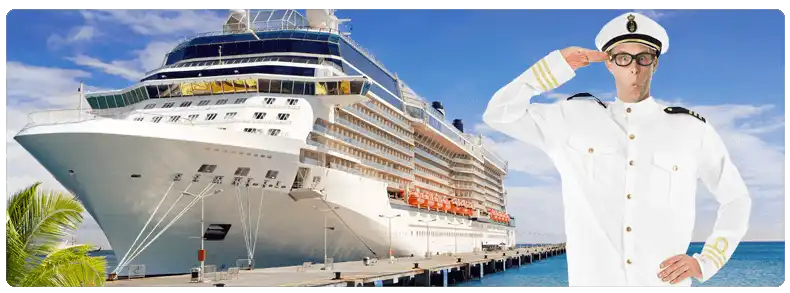
Nearly 24 million passengers will take a cruise in 2016 and Australians have been significant contributors to this phenomenal growth says new reports from Comparetravelinsurance.com.au. In 2014 Australia was named the world’s fastest growing cruise market and our love affair with the ocean doesn’t appear to end anytime soon.
New data from Comparetravelinsurance.com.au reveals that cruises are becoming an increasingly mainstream holiday choice. More and more Australians are choosing to cruise irrespective of age, economic status or life stage.
Top sailing destinations
We’re an ocean loving nation with our sights set on exploring every corner of the globe. Combine our passions and it’s easy to see why Australians are hooked on cruises.
The numbers say it all; based on travel insurance quotes, trips to the South Pacific islands continue to soar with cruise quotes to the region more than doubling since the website’s launch. Passenger numbers to Asia are also on the rise with cruise hubs such as Singapore, Hong Kong, Thailand, Indonesia and Malaysia providing Australians with direct, fly-in departure points.
Moreover, New Zealand is a consistently, well-loved cruise destination for Australians, particularly through the warmer months of October through to April. For Aussies with more time to get away, North America and Europe continue to keep their top spots for long haul cruise destinations.
Eat, sleep, cruise, repeat
Data shows that Aussies are heading on cruises for longer periods of time (between 29 - 35 days). Results also revealed a small yet significant spike in trips over 100 days in length. However, the most popular itineraries continue to lie between eight and 14 days.
Additional numbers showed that cruises of shorter durations (between three to four nights) are also luring younger and more budget focused travellers.
The Cruise Lines International Association (CLIA) 2014 industry report revealed a 59 per cent boom in four night cruises in 2014 (compared to 2013) while cruises of 5-7 days increased by 31 per cent.
On the flip side, the CLIA study also shows an upswing in longer voyages to far-off destinations such as Europe, the Caribbean and Alaska.
Cruising by the ages
Once notoriously difficult to attract, younger, savvier travellers are increasingly factoring a cruise into their holiday plans. Cruising has officially shaken off its staid, old image and is no longer seen as the forte of the ‘newlywed or nearly dead’.
Cruise quotes also confirmed a significant growth in cruise travellers aged 18-25. The increasing numbers of families and working adults tempted by shorter trip durations and cut-price cruises was reflected by a rise in travellers aged 35-45. The predominant demographic for cruising remains around the 45-65 age mark whilst substantial numbers of travellers well into their 70’s and 80’s continue to set sail.
A report by tech company Amadeus also revealed that 38 per cent of 18 to 30-year-olds had aspirations to go on a cruise holiday.
Cruise and be covered
A key factor of the growth in cruising can be attributed to its relative affordability. Package deals with all-inclusive meals and entertainment have considerably drummed up sales and expanded the Australian cruise market.
However, as the number of Australians getting on board continues to rise; more and more travellers will set sail for the first time leading to a rise in misconceptions and apprehensions. Many cruise virgins are unaware, for instance, that once their ship has docked they would no longer be covered by Australian Medicare.
According to Natalie Ball, Director of Comparetravelinsurance.com.au, passengers heading on a cruise shouldn’t leave port without travel insurance.
“Although cruise liners do have doctors on board, these are private services and costs can soar way beyond land prices.” says Ball.
“The risks of sea-sickness or contracting food-poisoning on board are a stark reality of modern cruising. Unpleasant as they are; it’s worth being realistic about such calamities and weighing up the merit in foregoing cover. In the rare and unfortunate scenario that your condition is too serious to be treated on board you may require helicopter evacuation to the nearest hospital. Such an operation could see you facing a small fortune in medical fees. Travel insurance would cover these expenses and more ensuring you’re not out of pocket should you fall ill.”
Ball concludes, “With more holidaymakers than ever taking cruises; it’s worth noting that cruise cover will do more than just cover you medically. Depending on your policy, you can also be covered for trip cancellation due to severe weather, or additional accommodation cover should your cruise be delayed due to unforeseen circumstances. And should your belongings go missing, you’d be covered for that too.”
Cruise control
With Australians’ seemingly endless appetite for cruising, there’s no sign of our seafaring habits abating. As the cruise industry continues to expand into an ever increasing array of destinations, a wider range of travellers will no doubt find their sea legs over the coming years.
More articles that you might like...

Natalie Smith
Having travelled to over 40 countries, studied tourism management and worked as a flight attendant for over three years, Natalie knows more than a thing or two about travel! She’s an adventure-lover, whose favourite trips have been trekking Machu Picchu and volunteering in an animal shelter in the Amazon. Qualified in Tier 2 General Insurance General Advice and specialising in travel insurance for the last five years, she in passionate about helping travellers get the most out of their holiday.








